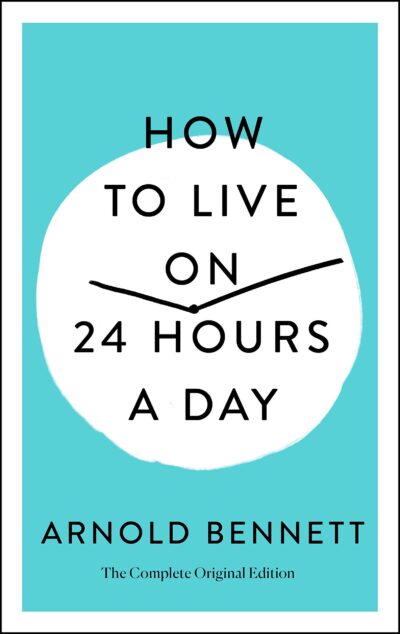64 Results with the "Self-help" genre
Adventure Fiction (146)
Biography (456)
Children's Literature (77)
Comics (6)
Culture (9)
Drama (21)
Fable (5)
Fantasy (210)
Fiction (432)
Finance (16)
Gothic Fiction (4)
Historical Fiction (375)
History (55)
Horror (9)
Lifestyle (1)
Literary (429)
Memoir (93)
Mystery (163)
Non-fiction (63)
Novel (570)
Paranormal Fiction (96)
Philosophical (136)
Poetry (222)
Politics (29)
Practical (32)
Psychological Thriller (66)
Relationship (5)
Romance Novel (284)
Romantic Melodrama (11)
Satire (18)
Science (25)
Science Fiction (169)
Society (64)
Society (2)
story (2)
Thriller (484)
True Crime (53)
view (13)
-
Chapter
I THE DAILY MIRACLE
 In the opening chapter of "How to Live on Twenty-Four Hours a Day," the author introduces the concept of the "daily miracle," an enlightening perspective on how every individual is allocated the same twenty-four hours each day as the most precious commodity. He begins with a critique familiar to many: observing someone who, despite a sufficient income and the means for a comfortable lifestyle, perpetually lives in a state of financial disarray, unable to efficiently utilize what they have. This critique…
In the opening chapter of "How to Live on Twenty-Four Hours a Day," the author introduces the concept of the "daily miracle," an enlightening perspective on how every individual is allocated the same twenty-four hours each day as the most precious commodity. He begins with a critique familiar to many: observing someone who, despite a sufficient income and the means for a comfortable lifestyle, perpetually lives in a state of financial disarray, unable to efficiently utilize what they have. This critique…-
28.6 K • Ongoing
-
-
 Chapter 17: Putting the Pieces Together: Self-Leadership. In life, we all experience moments where parts of ourselves seem to take over. For example, when confronted with trauma, we develop coping mechanisms that help us survive but may also fragment our sense of self. One of the key aspects of self-leadership is understanding and managing these internal parts, each with its own needs and responses. This process of integration is central to healing, especially for those who have faced significant trauma or…
Chapter 17: Putting the Pieces Together: Self-Leadership. In life, we all experience moments where parts of ourselves seem to take over. For example, when confronted with trauma, we develop coping mechanisms that help us survive but may also fragment our sense of self. One of the key aspects of self-leadership is understanding and managing these internal parts, each with its own needs and responses. This process of integration is central to healing, especially for those who have faced significant trauma or…-
362.9 K • Ongoing
-
-
Chapter
XII DANGERS TO AVOID
 In Chapter XII, "Dangers to Avoid," of "How to Live on Twenty-Four Hours a Day," the author warns the sincere aspirant towards making wise use of their time of several critical dangers. First, there's the danger of becoming a prig—a pompous individual who lacks a sense of humor and is excessively impressed by his discoveries, expecting everyone else to be equally impressed. This unintended outcome arises when one forgets that the quest is about better utilizing one's own time without imposing one's…
In Chapter XII, "Dangers to Avoid," of "How to Live on Twenty-Four Hours a Day," the author warns the sincere aspirant towards making wise use of their time of several critical dangers. First, there's the danger of becoming a prig—a pompous individual who lacks a sense of humor and is excessively impressed by his discoveries, expecting everyone else to be equally impressed. This unintended outcome arises when one forgets that the quest is about better utilizing one's own time without imposing one's…-
28.6 K • Ongoing
-
-
Chapter
Don’t Make Assumptions
 Chapter 4: Don’t Make Assumptions, the third agreement in The Four Agreements by don Miguel Ruiz, a principle that addresses the profound impact assumptions can have on our lives. Ruiz explains that making assumptions often leads to misunderstandings, unnecessary conflict, and emotional distress. Many of the problems we face in relationships and life stem from the habit of assuming we know what others are thinking or what they mean by their actions, often without confirming or asking for clarification.…
Chapter 4: Don’t Make Assumptions, the third agreement in The Four Agreements by don Miguel Ruiz, a principle that addresses the profound impact assumptions can have on our lives. Ruiz explains that making assumptions often leads to misunderstandings, unnecessary conflict, and emotional distress. Many of the problems we face in relationships and life stem from the habit of assuming we know what others are thinking or what they mean by their actions, often without confirming or asking for clarification.…-
90.9 K • Ongoing
-
-
 Chapter 7 explores the critical role of attachment in shaping a child's emotional and psychological development. The research conducted at the Massachusetts Mental Health Center focused on children who had experienced severe neglect and abuse. These children, although exhibiting various disruptive behaviors, such as aggression, emotional numbness, and withdrawal, were also deeply in need of affection. The behavioral patterns observed in the clinic revealed how trauma had altered their ability to form…
Chapter 7 explores the critical role of attachment in shaping a child's emotional and psychological development. The research conducted at the Massachusetts Mental Health Center focused on children who had experienced severe neglect and abuse. These children, although exhibiting various disruptive behaviors, such as aggression, emotional numbness, and withdrawal, were also deeply in need of affection. The behavioral patterns observed in the clinic revealed how trauma had altered their ability to form…-
362.9 K • Ongoing
-
-
 Chapter 13 delves into the essential role of maintaining physical fitness as we grow older, with a particular focus on injury prevention through stability training. A significant factor contributing to the decline in physical activity in later years is the presence of injuries that were never fully rehabilitated. These lingering injuries often disrupt exercise routines, leading to chronic pain, limited mobility, and a general decline in physical capabilities. The author emphasizes how injuries, whether…
Chapter 13 delves into the essential role of maintaining physical fitness as we grow older, with a particular focus on injury prevention through stability training. A significant factor contributing to the decline in physical activity in later years is the presence of injuries that were never fully rehabilitated. These lingering injuries often disrupt exercise routines, leading to chronic pain, limited mobility, and a general decline in physical capabilities. The author emphasizes how injuries, whether…-
87.7 K • Ongoing
-
-
 Chapter II of "How to Live on Twenty-Four Hours a Day" introduces a dialogue around the perception of time and the universal desire to maximize daily living beyond the apparent constraints of a 24-hour day. The author starts by preemptively addressing a potential objection: the claim of an individual who feels adequately satisfied with how they utilize their time. This character, depicted with a hint of sarcasm, is someone who has apparently mastered the art of living within the daily temporal limit and…
Chapter II of "How to Live on Twenty-Four Hours a Day" introduces a dialogue around the perception of time and the universal desire to maximize daily living beyond the apparent constraints of a 24-hour day. The author starts by preemptively addressing a potential objection: the claim of an individual who feels adequately satisfied with how they utilize their time. This character, depicted with a hint of sarcasm, is someone who has apparently mastered the art of living within the daily temporal limit and…-
28.6 K • Ongoing
-
-
 Chapter 18: Filling in the Holes: Creating Structures. Addressing trauma is more than just remembering the past—it involves confronting the deep voids left by feelings of neglect, fear, and abandonment. Growing up without affection, in a world where your pain went unseen, often leaves a person struggling to feel loved or wanted. The emotional scars from such experiences can distort one's sense of self-worth and agency, creating a lifelong challenge in forming a healthy identity. Research by Judy Herman…
Chapter 18: Filling in the Holes: Creating Structures. Addressing trauma is more than just remembering the past—it involves confronting the deep voids left by feelings of neglect, fear, and abandonment. Growing up without affection, in a world where your pain went unseen, often leaves a person struggling to feel loved or wanted. The emotional scars from such experiences can distort one's sense of self-worth and agency, creating a lifelong challenge in forming a healthy identity. Research by Judy Herman…-
362.9 K • Ongoing
-
-
 The Body Keeps the Score by Bessel van der Kolk explores how trauma impacts both the brain and body, offering insights into healing through therapies like mindfulness and yoga. A powerful, essential read for understanding and overcoming trauma.
The Body Keeps the Score by Bessel van der Kolk explores how trauma impacts both the brain and body, offering insights into healing through therapies like mindfulness and yoga. A powerful, essential read for understanding and overcoming trauma.-
4.1 K • Jan 8, '25
-
155.5 K • Jan 8, '25
-
46.3 K • Jan 8, '25
-
-
Chapter
Always Do Your Best
 THE FOURTH AGREEMENT Always Do Your Best THERE IS JUST ONE MORE AGREEMENT, BUT IT’S the one that allows the other three to become deeply ingrained habits. The fourth agreement is about the action of the first three: Always do your best. Under any circumstance, always do your best, no more and no less. But keep in mind that your best is never going to be the same from one moment to the next. Everything is alive and changing all the time, so your best will sometimes be high quality, and other times it…
THE FOURTH AGREEMENT Always Do Your Best THERE IS JUST ONE MORE AGREEMENT, BUT IT’S the one that allows the other three to become deeply ingrained habits. The fourth agreement is about the action of the first three: Always do your best. Under any circumstance, always do your best, no more and no less. But keep in mind that your best is never going to be the same from one moment to the next. Everything is alive and changing all the time, so your best will sometimes be high quality, and other times it…-
90.9 K • Ongoing
-
- Previous 1 … 5 6 7 Next

